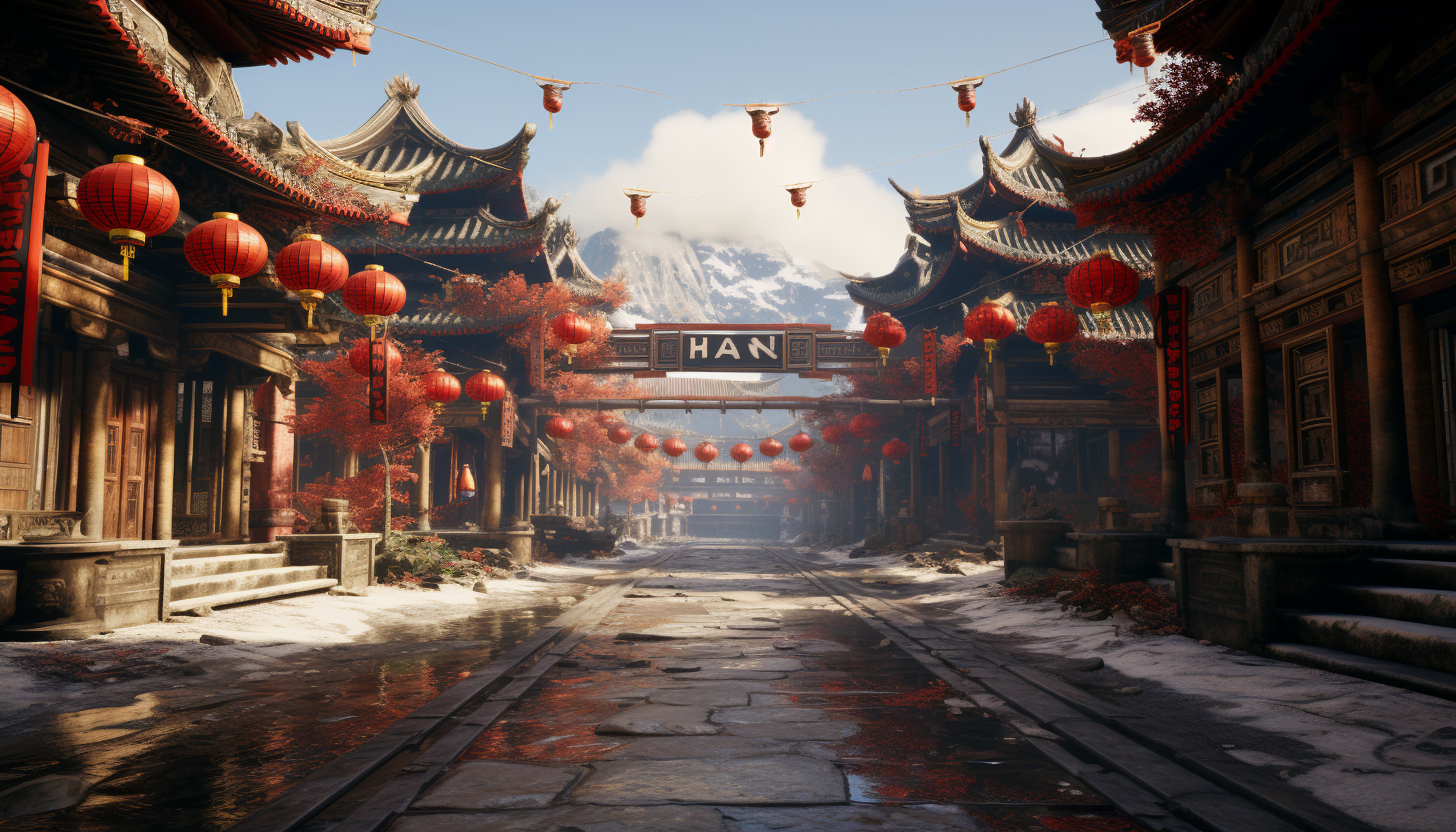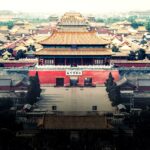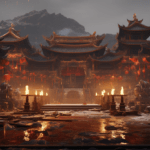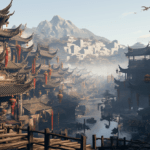The Han Dynasty is one of the most significant and influential periods in Chinese history. Spanning over four centuries, from 206 BC to 220 AD, it was a time of tremendous growth, innovation, and cultural development. This article delves into the fascinating history of the Han Dynasty, exploring various aspects and events that shaped this mighty empire.
Note: If you’re intrigued by the fascinating history of the Han Dynasty, don’t miss out on our previous article, Exploring the Rich Artistic Legacy of Han Dynasty: Unveiling the Beauty of Cultural Artifacts. Click the link to delve deeper into the world of Han Dynasty art and history!
1) The mighty and huge Han Empire was conquered by a peasant.
Centuries before the Han Dynasty came into existence, unrest and turmoil dominated the land. The Qin Dynasty, which preceded the Han Dynasty, was oppressive, and the people were suffering under its rule. It was during this period that a peasant uprising led by Liu Bang emerged victorious, overthrowing the Qin Dynasty and establishing the Han Empire. This stark example of a humble peasant conquering a mighty empire showcased the power of collective will and the resilience of the Chinese people.
2) The Han Empire was the longest lasting empire in the region.
Spanning a remarkable 400 years, the Han Empire stands as the longest-lasting empire in Chinese history. This dynasty not only brought stability and prosperity to the region but also established a strong administrative system that would serve as a blueprint for future Chinese dynasties. The Han Dynasty’s longevity is a testimony to its ability to adapt and survive in the face of internal and external challenges.
3) Han Dynasty China was more Central Asian due to Silk Road trade.
The Silk Road, a network of trade routes connecting China with the Western regions, played a pivotal role in shaping Han Dynasty China. This extensive trade network facilitated the exchange of goods, ideas, and cultures between China and Central Asia. The influx of Central Asian influence enriched Han Dynasty China, leading to the assimilation of various customs, religions, and technologies.
4) A Han court eunuch invented paper.
One of the most remarkable contributions of the Han Dynasty to human civilization is the invention of paper. Cai Lun, a court eunuch during the Eastern Han period, is credited with inventing paper as we know it today. This revolutionary invention transformed the way knowledge was recorded, making books and writings more accessible to the masses. The invention of paper propelled the cultural and intellectual advancements of the Han Dynasty.
5) The Western Han and Tang Dynasties were strangely alike.
The Western Han Dynasty and the Tang Dynasty, which flourished centuries later, shared striking similarities. Both dynasties witnessed a golden age of arts, literature, and technological advancements. Both empires expanded their territories through military conquests and maintained a stable bureaucratic system. The remarkable similarities between these two dynasties illustrate the enduring influence and legacy of the Han Dynasty on subsequent Chinese dynasties.
6) The Han Empire was much like the Roman Empire in size and population.
The vastness of the Han Empire is comparable to that of the Roman Empire. It covered an expansive territory, including present-day China, Vietnam, Korea, and parts of Central Asia. Additionally, the population of the Han Empire was immense, numbering in the tens of millions. The scale and scope of the Han Empire were truly remarkable, rivaling the grandeur and expanse of the Roman Empire.
7) The Western Han Empire’s population more than tripled.
During the Western Han period, the population of the empire experienced an astounding growth. Through effective governance and agricultural advancements, the population of the Han Empire more than tripled. This population boom fueled economic development, technological progress, and cultural achievements. It created a vibrant and thriving society that propelled China’s influence throughout the region.
8) The latter Han Empire was devastated by natural catastrophes!
The latter part of the Han Dynasty was marked by devastating natural catastrophes that wreaked havoc on the empire. Frequent floods, droughts, and earthquakes caused widespread destruction and loss of life. These natural disasters severely weakened the empire’s infrastructure and strained its resources. The Han Dynasty’s ability to overcome these calamities highlights the resilience and determination of its people.
9) The corruption at the end of the Eastern Han Dynasty was so bad that the people revolted.
As the Eastern Han Dynasty neared its end, corruption plagued the government and bureaucracy. The widespread graft and nepotism reached alarming levels, leading to a growing dissatisfaction among the people. Frustrated and disillusioned, the population revolted against the ruling elite. This revolt further destabilized the already weakened empire, ultimately contributing to its downfall.
10) The Battle of Red Cliffs (208 AD) involved around 500,000 men!
One of the most significant and monumental battles of the Han Dynasty was the Battle of Red Cliffs. Fought in 208 AD, this epic battle involved approximately 500,000 men. The battle was a decisive turning point, marking the decline of the Han Dynasty and the rise of the Three Kingdoms period. The sheer scale and intensity of the Battle of Red Cliffs underscored the extent of political, military, and social changes that were reshaping China.
The Rise and Fall of the Han Dynasty
[youtube v=”FwEkp4I75OA”]
The Han Dynasty, which emerged in China during the early years of the third century, was a remarkable iron age kingdom that united the country under one banner. It marked the first true imperial power in China and brought a period of prosperity and golden age that lasted for over 400 years. However, this dynasty eventually faced its demise due to internal conflicts and external pressures.
One of the key figures in understanding the fall of the Han Dynasty is Ts’ao Chih, a Chinese poet who witnessed the devastation of Luoyang, the once prosperous capital of China. Luoyang had been the center of grand palaces and temples, but it now lay in ruins due to the wars that had torn the country apart. Ts’ao Chih’s poignant poem reflects on the loss of the golden age:
“I climb to the crest of Beimang Mountain and look down on the city of Luoyang. In Luoyang, how quiet it is! Palaces and houses all burned to ashes. Walls and fences broken open, thorns and brambles reaching up to the sky.”
The fall of Luoyang became a symbol of the end of the golden age of the Han Dynasty. It made Ts’ao Chih wonder how such a great empire could come to such a devastating end and whether the golden age would ever return.
To understand the rise and fall of the Han Dynasty, we must first delve into the geographical and geological factors that shaped China. The collision of the Indian and Asian plates gave birth to the Himalayas, the highest mountain range in the world. Behind the Himalayas lies the Tibetan Plateau, a vast arid steppe that greatly influenced the climate of the region.
The Tibetan Plateau’s eastern edge gradually descends into plains, giving rise to rivers like the Yangtze and the Yellow River. The Yangtze, the third longest river in the world, meanders peacefully through deep valleys and stony gorges. On the other hand, the Yellow River is more unpredictable and prone to flooding due to its abundance of silt and sand.
Human activity has thrived in this region for thousands of years. Rice cultivation along the Yangtze River and the cultivation of wheat, barley, and millet on the northern Chinese plains brought about an advanced civilization known as Jiahu. The Longshan culture further developed the region’s agricultural techniques, making the land highly fertile.
The heart of all goodness, as believed by the ancient Chinese, lay between the Yangtze and the Yellow River. The lands in this region, known as “huaxia,” were considered the center of the Chinese Empire, while the surrounding areas were seen as barbarian lands with diminishing virtue.
However, despite the prosperity and greatness of the Han Dynasty, internal conflicts and external pressures led to its eventual downfall. Political struggles, corruption, and ineffectiveness in governance weakened the empire from within. Additionally, barbarian invasions from the north and the rise of regional warlords escalated tensions and destabilized the empire.
The Han Dynasty was the first true imperial power in China that brought forth a golden age of prosperity and unity. However, its downfall came as a result of internal conflicts, external pressures, and the inability to sustain the once great empire. The ruins of Luoyang serve as a poignant reminder of the passing of a glorious era, leaving people to wonder if the golden age of emperors would ever return.
Conclusion
The Han Dynasty stands as a testament to the resilience, innovation, and cultural richness of ancient China. From its humble beginnings with a peasant uprising to its eventual downfall amidst corruption and natural disasters, the Han Dynasty left an indelible impact on Chinese history. Its legacy continues to shape the cultural, political, and intellectual landscape of China to this day.
FAQs (Frequently Asked Questions)
1) Q: How long did the Han Dynasty last?
A: The Han Dynasty lasted for approximately four centuries, from 206 BC to 220 AD.
2) Q: Who invented paper during the Han Dynasty?
A: Cai Lun, a court eunuch, is credited with inventing paper during the Eastern Han period.
3) Q: How did the Han Dynasty compare to the Roman Empire?
A: The Han Dynasty and the Roman Empire were similar in terms of their size and population, showcasing their grandeur and influence.
4) Q: What caused the downfall of the Eastern Han Dynasty?
A: Widespread corruption within the government and bureaucracy contributed to the downfall of the Eastern Han Dynasty.
5) Q: Which battle marked a turning point in the Han Dynasty?
A: The Battle of Red Cliffs, fought in 208 AD, marked a significant turning point in the Han Dynasty’s decline.
- Mastering Leader in Spanish: The Complete Guide - April 19, 2025
- Uncovering Surprising Parallels: England Size Compared to US States - April 19, 2025
- Old Mexico Map: Border Shifts 1821-1857 - April 19, 2025
















